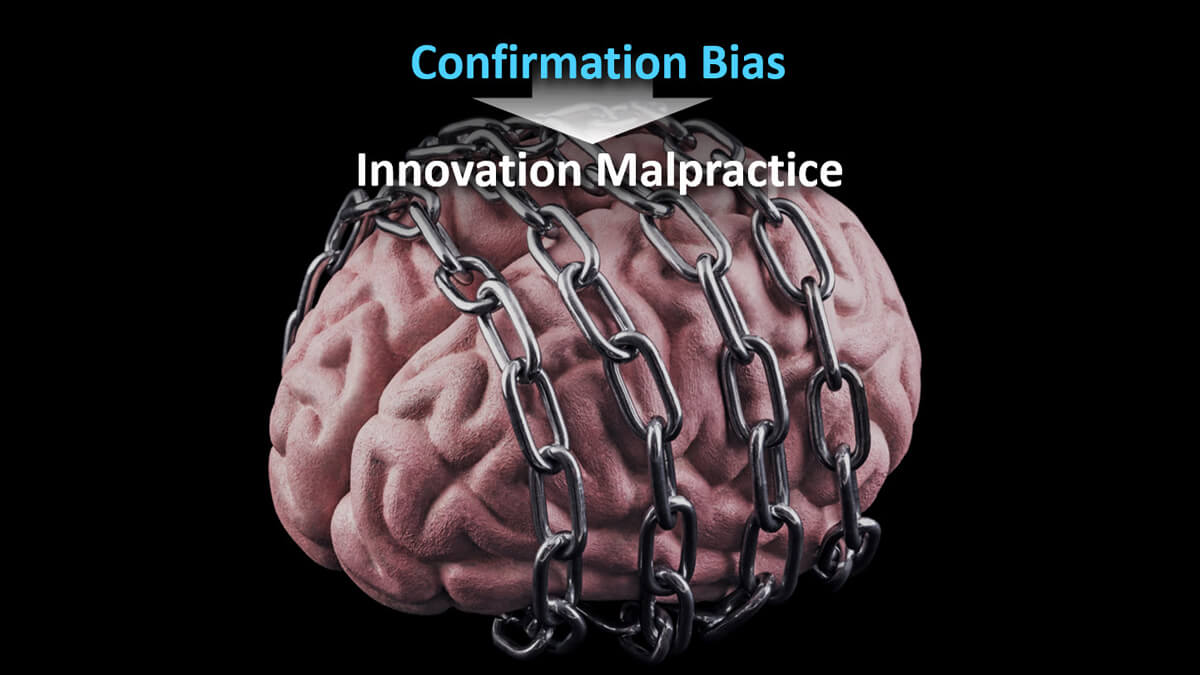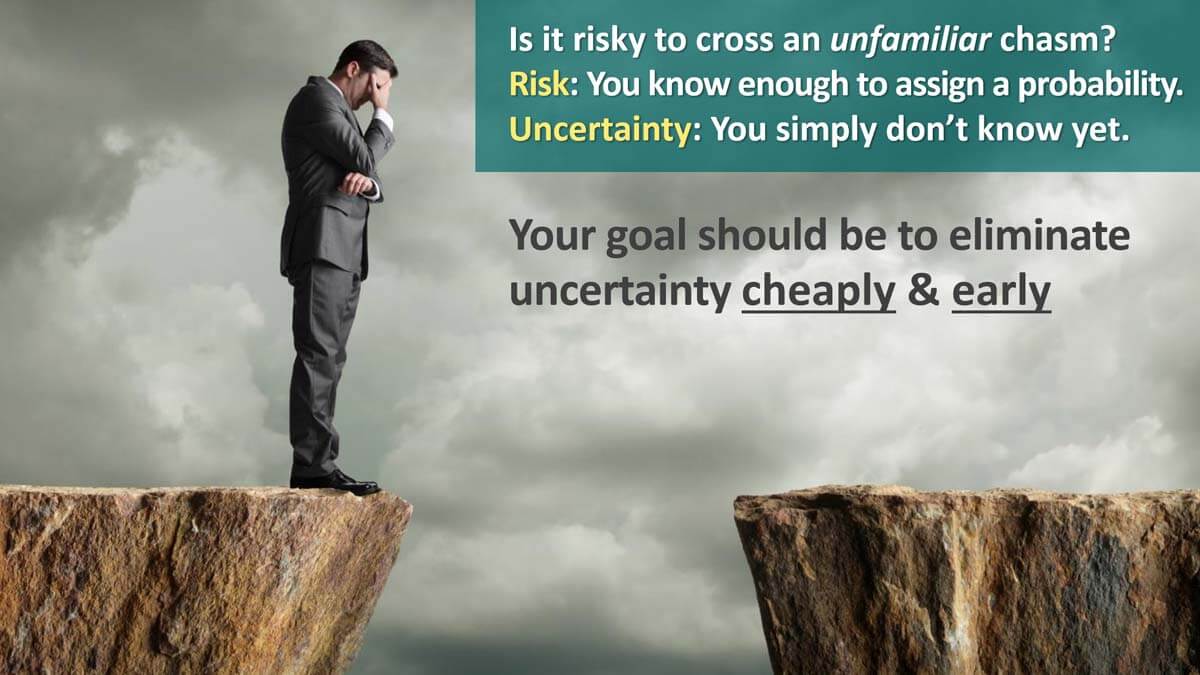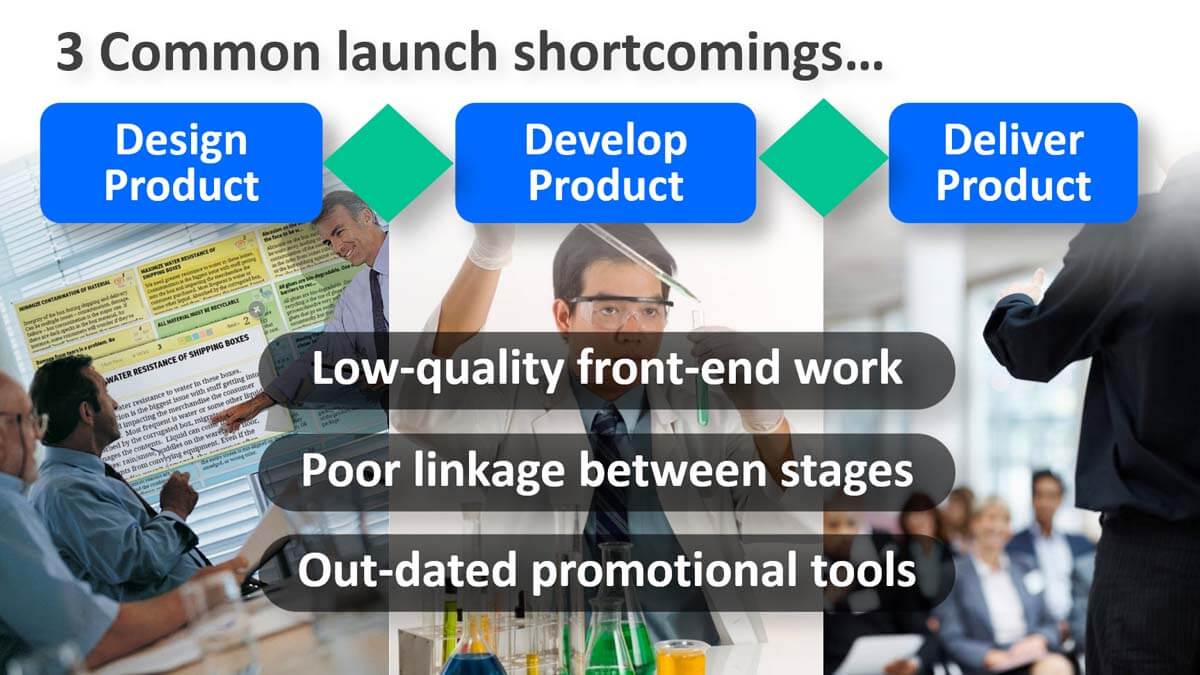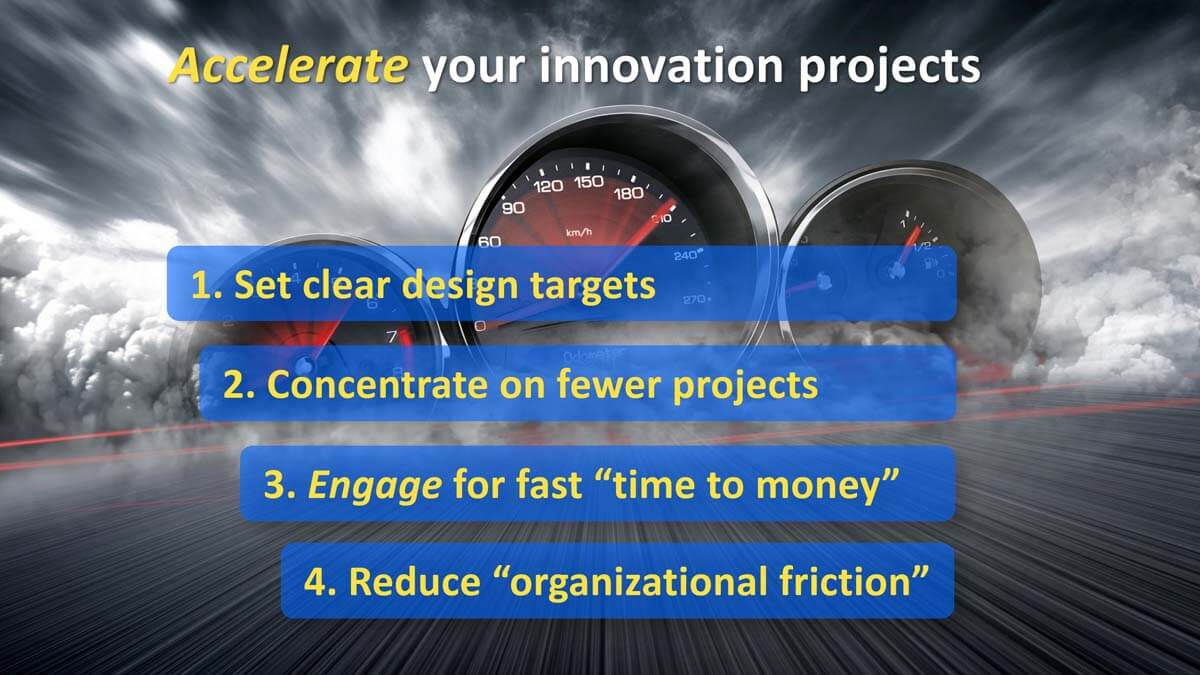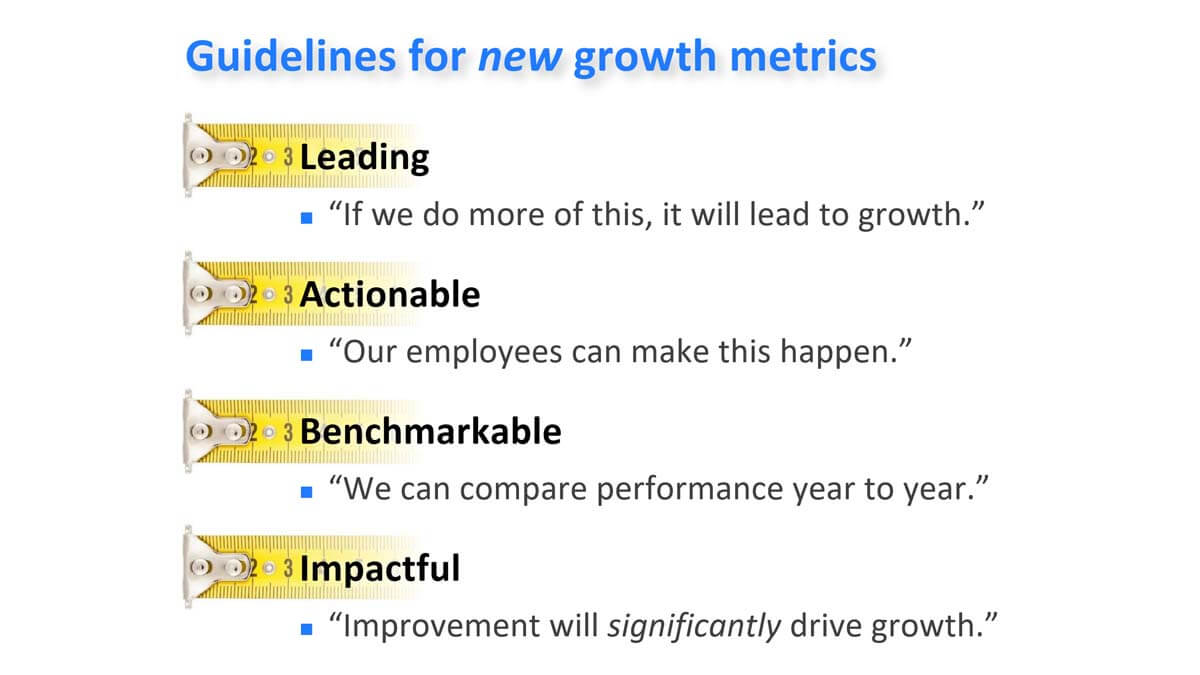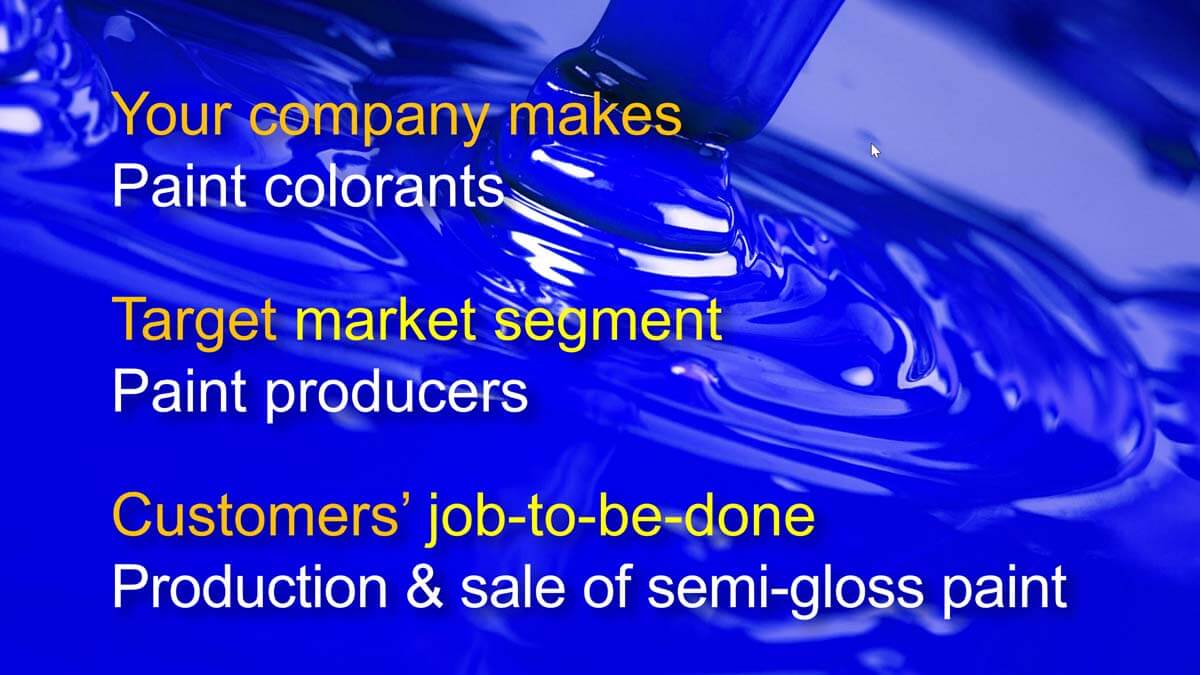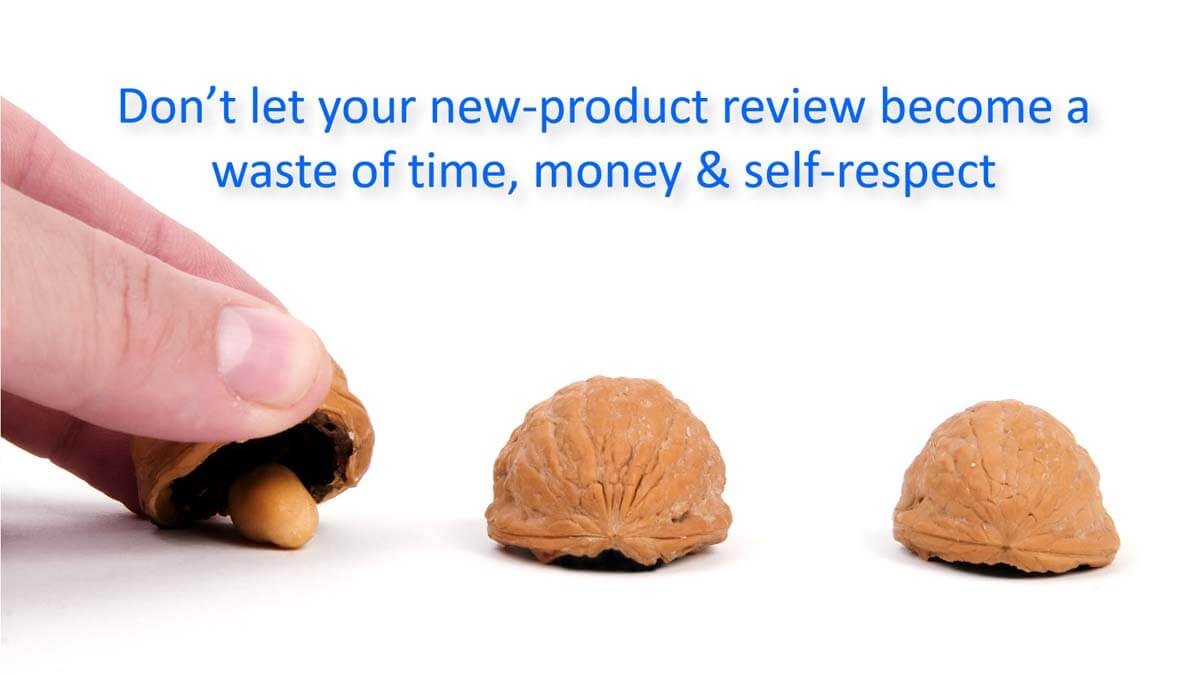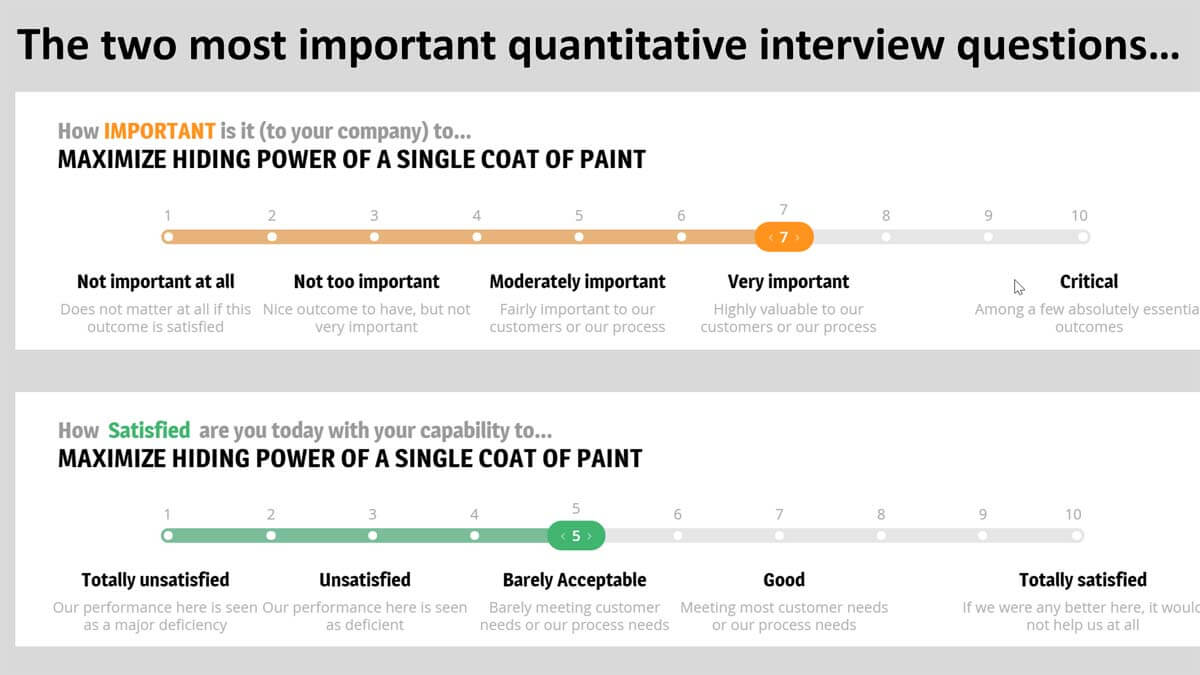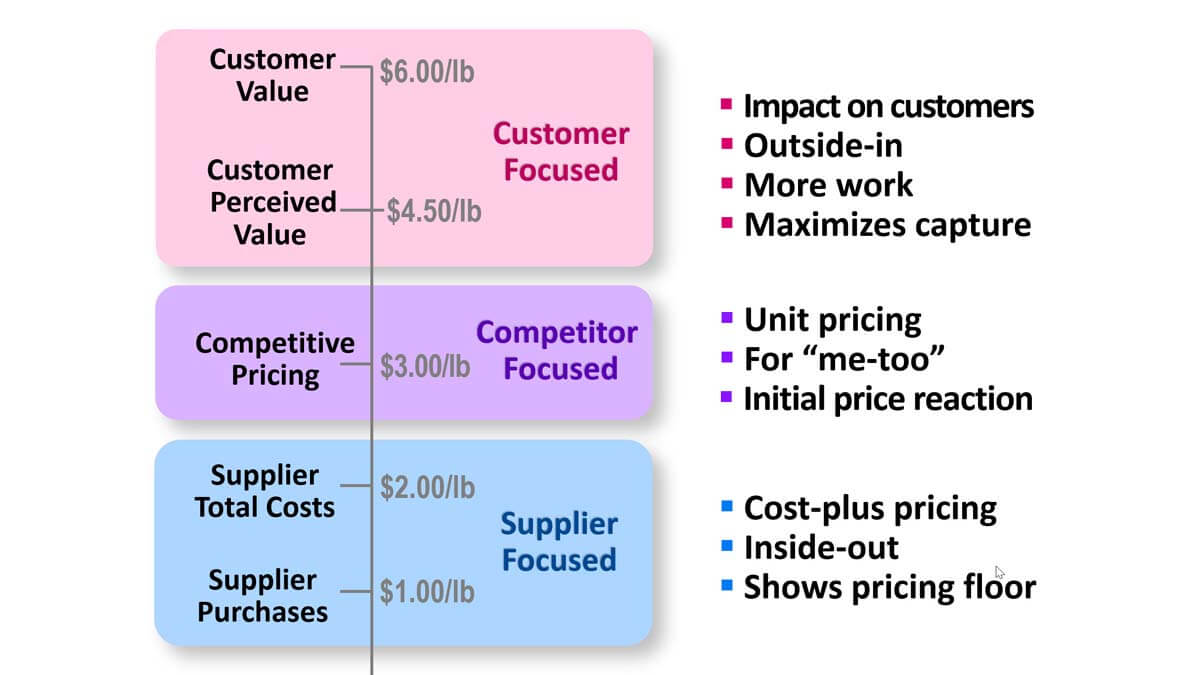Think you can validate your new product concept with customers and avoid confirmation bias? Good luck with that. In your last performance review, did you agree with your boss’s praise more than his criticism? If so, you may not have overcome confirmation bias quite yet.
So if you want to avoid innovation malpractice, you need to stop leading the witness in interviews. Let them lead you to what really matters to them. My suggestion: Focus your customer interview on their desired outcomes. Then just check afterwards to see if their outcomes are a good match for your intended solution.
More in 2-minute video, Give your hypothesis the silent treatment
When you can count on profitable, sustainable organic growth, everything gets better. Employees have stable, rewarding careers. Industry-watchers admire your company. Customers want to work with you. Activist investors bother someone else. And it irritates competitors. What’s not to love?
But you have only one path to this type of growth. You must understand and meet customer needs better than others. How intense is your focus here? Is it greater than that of your competitors’? Or is your business distracted by other initiatives that can never deliver rapid, profitable, sustainable growth?
More in 2-minute video, Rethink your major initiatives
It may be OK for consumer goods producers to guess their customers’ needs. After all, their product developers are end-consumers themselves. So if you’re an Apple engineer, you already know what consumers like you want in a mobile phone.
But your B2B customers know much more than you about their needs. If you make pigment, your customers know a lot more than you about the paper production it’s used in. Isn’t it silly to guess their needs when they’d love to tell you… if you asked the right way? That’s why you need to let the customer lead the interview, not you. Yep, you can put your questionnaire or interview guide away now.
More in e-book, Reinventing VOC for B2B
With apologies to Tolstoy’s Anna Karenina… all great voice-of-customer (VOC) interviews are alike in the same way: The customer is talking during most of the interview. And they are talking about those outcomes (desired end results) they want to talk about. Anything else is clutter, much of which leads to unhappiness.
For B2B voice-of-customer interviews, plan on two rounds of interview… first qualitative interviews (called Discovery), followed by quantitative interviews (called Preference). In both cases, the customers will be doing most of the talking… and about matters that interest them. They’ll be happy. You’ll be happy.
More in video, Reinventing VOC for B2B
In the 1970’s, Detroit automakers didn’t realize they were in a battle for quality. but Toyota did. In later years, the battle moved from quality to productivity improvements. But those were both last century’s battles. Today the battle is over innovation… to deliver more value to customers than your competitors.
Does your business leadership team know it’s in a battle for innovation? One way to find out is to wait until a competitor upends your market with a blockbuster new product. A better approach is to start building innovation capabilities earlier and strong than those competitors. More in white paper, Catch the Innovation Wave
Also see 2-minute video, Catch the innovation wave
You’ll have much better project reviews if they understand this difference. You can only assign a level of risk if you know the probability of an unfavorable event, e.g., 40% chance of a thunderstorm. It’s pointless—even misleading—to assign probabilities of success, net present values, and so forth in a project’s early phase. That comes later, after your team drives dozens of assumptions from uncertainty to certainty. The methodology for doing this isn’t difficult: Check out this 2-minute video at Why risk and uncertainty are different.
More in video, Project de-risking with Minesweeper® software
We see three common shortcomings with B2B product launches: 1) Low-quality front-end work: Suppliers develop the wrong product, so even the best launch is just putting lipstick on a pig. 2) Poor linkage between stages: The launch is not driven by what was learned in the front end. 2) Out-dated promotional tools: This includes poor selection of the many traditional and digital tools available today. It helps to follow these 4 steps: The Right Product delivered to the Right Market using the Right Message through the Right Media.
More in 2-minute video, Launch new products with power
Is your business looking for ways to accelerate its new product development? Here are four ways to do this: 1) Set clear design targets in the front-end. When the team knows what the customers wants early-on, it eliminates second-guessing, dead-end detours and hesitation. 2) Concentrate resources on fewer projects, staff them for speed, and kill any dead-end projects quickly. 3) Focus on “time-to-money” (not just “time to market”). If you engage customers throughout development, they’ll anticipate your new product and begin evaluating it sooner. 4) Eliminate “organizational friction”… travel bans, spending freezes, hiring delays, re-orgs, new initiatives, and so on.
More in 2-minute video, Pursue fast innovation
The Vitality Index (% of sales from new products) is helpful, but it suffers from being a lagging indicator. So how would you supplement it? Any new innovation metric you adopt should satisfy 4 rules: 1) Leading: “If we do more of this it will lead to growth.” 2) Actionable: “Our employees can make this happen.” 3) Benchmarkable: “We can compare to others and year-to-year.” 4) Impactful: “Improvement will significantly drive growth.
Here are two new innovation metrics that satisfy all four rules: Growth Driver Index (GDI) and Commercial Confidence Index (CCI). These measure your growth capabilities and evidence-based customer insight, respectively. (See white paper, New Innovation Metrics.)
More in 2-minute video, Employ new growth metrics
If you want to develop a great new product, your first step should be to target a single market segment and job-to-be-done (JTBD) within that segment. A market segment is a “cluster of customers with similar needs.” If you develop one product for multiple market segments, your new product won’t satisfy any customers to the fullest extent. By definition, different market segments have different needs, right?
If your company makes colorants, your target market segment might by paint producers. But your project scope is still too broad: You need to target a specific job to be done by those paint producers. Their job might be, “production and sale of semi-gloss paint.” This is explained further in the article, Quantitative questions for interviews
More in 2-minute video, Begin with customers’ job to be done
My golden rule of investment is, “Make your decision when you’ve gathered the most facts and spent the least money.” If you do it right, this point in time is the gate just before the costly development stage. Most companies are far too casual here, letting each team build and present its own unique PowerPoint slides. Human nature says teams will use these slides to talk about their project’s strong points, avoiding weak areas.
So management tries to guess what’s missing: “What about the competition? Are there more technical risks? Is the problem this? Is it something else?” This shell game is waste of time, money and self-respect. Better to have a standard business case everyone works from. Here’s a sample of an abbreviated business case called a Market Case: www.marketcasesample.com
More in 2-minute video, Build a front-end business case
I think the biggest mistake is failing to use quantitative customer interviews. Why use quantitative questions for interviews, not just qualitative? Two reasons. First, qualitative interviews give you reams of customer quotes with no good way to prioritize customer needs. Sure, you could count the number of times customers cite a need, but frequency of remarks is a poor substitute for customer eagerness to improve.
More important, with only qualitative interviews you’ll succumb to confirmation bias… the tendency to hear and interpret information according to your preconceived notions. With quantitative questions for interviews, you’ll have hard data on customer needs that your team hasn’t filtered or skewed. You get 100% unadulterated insight straight from the customer.
More in 2-minute video, Quantitative interviews are a must
Your pricing could be supplier-focused, competitor-focused, or customer-focused. 1) Supplier-focused pricing is cost-plus pricing. It’s inside-out, leaves money on the table and only indicates your pricing floor. 2) Competitor-focused emphasizes unit pricing, and is only useful for me-too products and gauging initial price reaction. 3) Customer-focused pricing reflects the economic impact on customers. It’s outside-in and does require more work for you. But if you want to maximize value capture, it’s the only way.
More in 2-minute video, Use value calculators to establish pricing
If you ran a zoo, you’d keep your jungle animals and farm animals in separate enclosures, right? Your technology development projects are untamed, jungle animals: You don’t completely understand them, and you’re not sure what they’ll do or where they’ll go next. Your product development projects are predictable farm animals. You know what they’re supposed to do, and who they’re supposed to do it for.
When you commercialize technology, you are “domesticating” wild animals for productive purposes. As a first step, you must be crystal clear which type of project your scientists or engineers are working on at any point in time. Remember, technology development turns money into knowledge; product development turns knowledge back into money. You can learn more from this white paper, Commercialize technology in 6 foolproof steps.
More in this 2-minute video, How to pursue transformational projects
